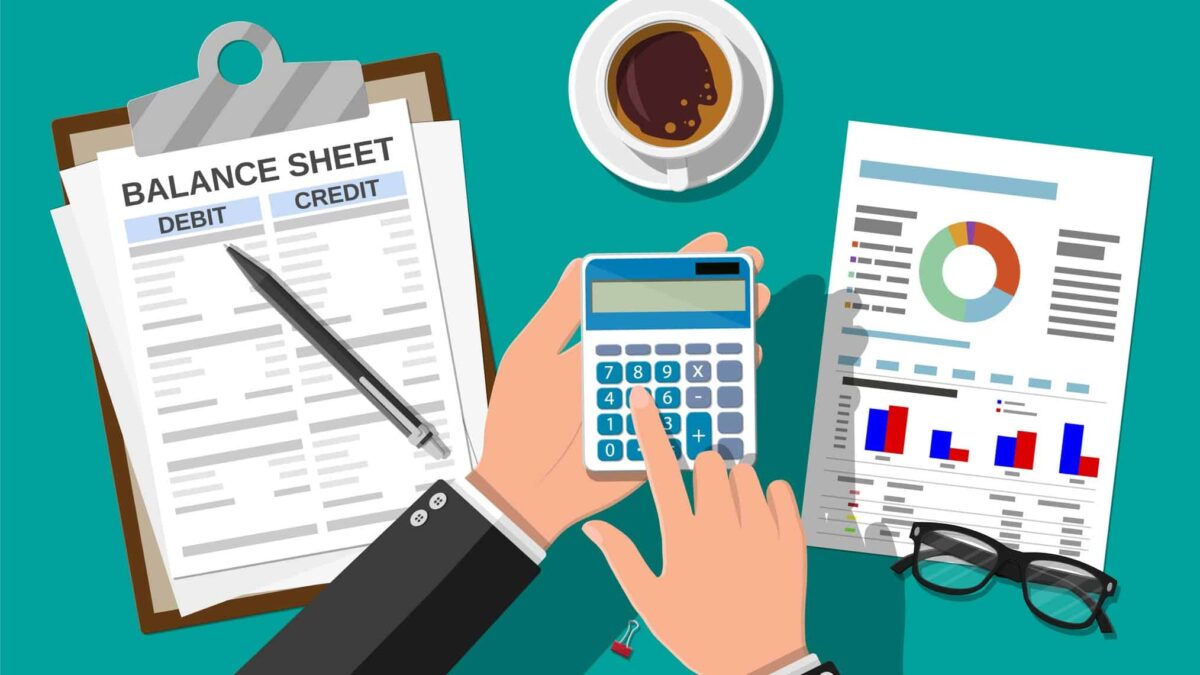Balance sheet items – Investors and financial analysts rely on financial data to analyze the financial performance of companies in order to predict the future direction of their stock prices. Therefore, annual reports are one of the most important and reliable financial data resources because they contain all the company’s financial data. The financial statements are represented in three financial statements, namely, the income statement, cash flow statement, and balance sheet statement, which deal with the company’s financial position in terms of its assets, liabilities, and shareholder rights. These data are clear through analyzing the items included in the balance sheet list that will be addressed in this article.
How to analyze balance sheet items
The balance sheet is defined as a financial statement that shows the company’s assets and liabilities in addition to shareholders’ equity at a specific time. The balance sheet list is an essential tool used by investors and analysts to understand and analyze the existing financial position of a company, and it also provides the basis for calculating expected rates of return for investors and assessing the company’s capital structure. because it allows the user to obtain financial data related to the company’s assets and liabilities, helping them to answer questions such as whether the company has a positive net worth, whether it has enough cash and short-term assets to be able to cover its obligations, and whether the company has too much debt compared to other competing companies.
Assets
Assets refer to what a company uses to operate its business and are divided into current assets and non-current assets. Current assets are assets that can be converted into cash within a year or less, while non-current assets are assets that cannot be converted into cash for at least a year.
Current assets
The accounts within the assets item are arranged from top to bottom based on the amount of their liquidity. The most important items that fall under “current assets” are the following:
- Cash: and its more liquid equivalent assets, such as Treasury bills, short-term certificates of deposit, and hard currencies
- Marketable securities: These are equity and debt securities that are highly liquid in the market.
- Accounts receivable: It refers to the money that customers owe to the company and may also include doubtful accounts because some customers may default on their debts.
- Inventory: Inventory refers to any merchandise available for sale that is valued at cost or market price, whichever is lower.
- Prepaid expenses: These expenses represent any amounts that the company has already paid in advance, such as for insurance, advertising, and rental contracts.
Non-current assets
Several items fall under the category of non-current or long-term assets and are clear in the following points:
- Long-term investments: These are securities that cannot be liquidated for at least one year.
- Fixed assets: includes land, buildings, equipment, machinery, and other durable assets that usually require large capital.
- Intangible assets: These include valuable intangible assets such as intellectual property and goodwill. These assets are generally included on the balance sheet only if they are acquired and not merely developed internally.

Commitments
Liabilities represent the other side of the balance sheet, which is all that the company owes to external parties and is divided into long-term, short-term, or current obligations.
Short-term commitments
Short-term or current liabilities are defined as the financial liabilities and obligations that the company owes to other parties, such as invoices to be paid to suppliers, interest on bonds issued to creditors, rent, salaries, etc., which are due within one year and include the following items:
- The rolling portion of long-term debt
- Bank indebtedness.
- Interest payable.
- Payable wages.
- Advance payments to customers
- Dividends payable.
- Earned and unearned premiums
- Accounts Payable.
Long-term commitments
Long-term liabilities include debts and financial obligations that become due after a period of more than one year from the balance sheet date and include each of the following:
- Long-term debt: It includes the amount of the original debt and any interest incurred on the issued bonds.
- Pension Fund Obligation: The money that the company must pay into the retirement accounts of its employees.
- Deferred tax liability
Shareholders’ equity
Shareholders’ equity, or “equity,” represents the initial amount of money invested in the business, i.e., in the establishment of the company. If the company decides at the end of the fiscal year to reinvest its net profits after taxes, these retained earnings will be transferred from the income statement to the balance sheet and then to the shareholders’ equity account. This account also represents the total net worth of the company, and in order to achieve equality in the balance sheet, the total assets must be equal to the liabilities in addition to the shareholders’ equity. The following items fall under the shareholders’ equity:
- Retained or Retained Earnings: The net profits that the company reinvests in its business or uses to pay off debts; the remaining amount is distributed to shareholders.
- Treasury shares: These are shares that the company repurchases and can be sold at a later time in order to obtain profits.
- Additional Paid-in Capital or Surplus Capital: It is the amount invested by shareholders in excess of both types of stock accounts, which are based on the nominal value rather than the market price. The paid-up capital is the sum of the equity purchased at any price.
Read also: Predict a recession by knowing its stages
